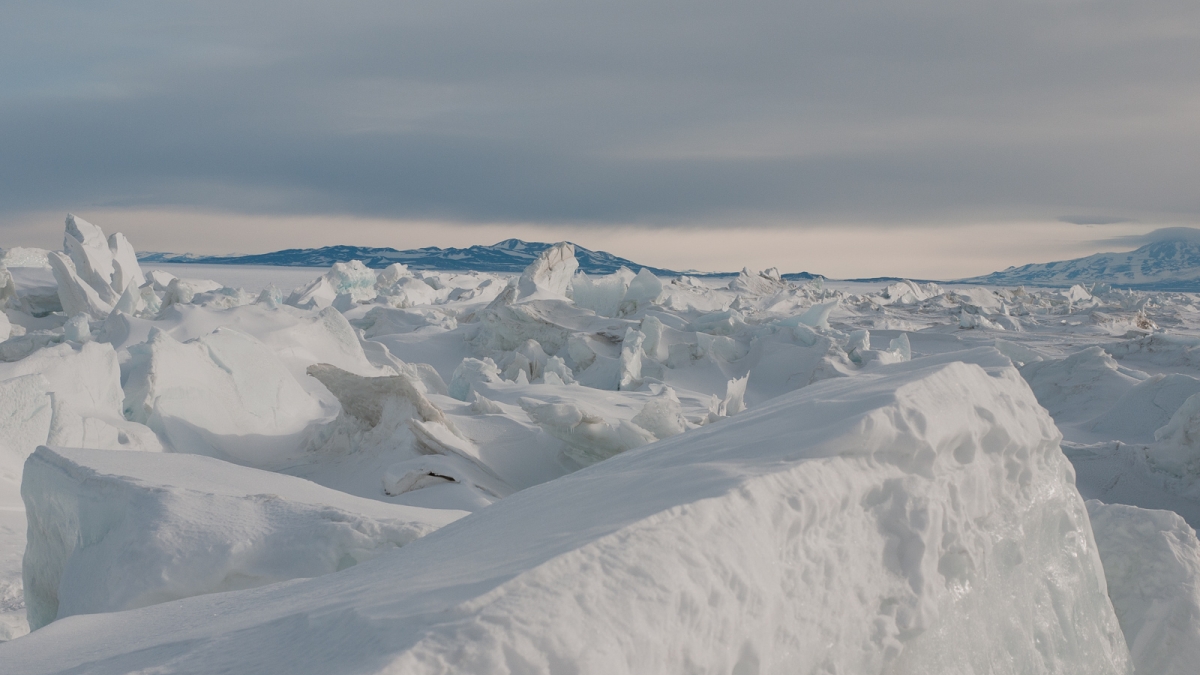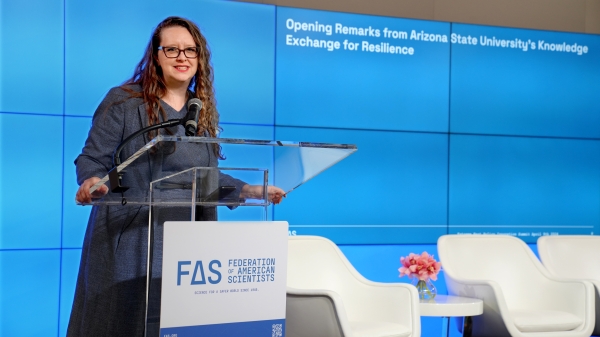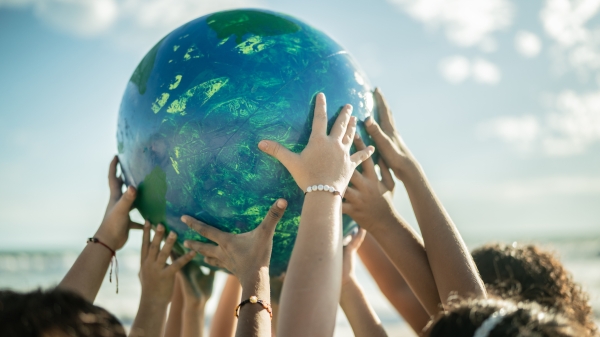What’s next for Arctic sea ice?
American Meteorological Society report calls magnitude of sea ice decline unprecedented

The American Meteorological Society released its annual State of the Climate report Aug. 1. The report, compiled by National Oceanic and Atmospheric Administration’s Center for Weather and Climate, shares detailed updates on annual changes to global climate indicators and weather events. This year’s report details 2017 climate records, which include Earth experiencing record-high sea level rises and significant losses of Arctic sea ice.
According to the report, Arctic air temperatures increased at twice the rate of the rest of the world. The report called the magnitude and sustained rate of declining sea ice unprecedented.
Stephanie Pfirman, a professor in Arizona State University's School of Sustainability, studies climate change, with emphasis on changes in Earth’s polar regions — along with diversity in interdisciplinary research. She spoke to ASU Now about what’s next for Earth’s Arctic sea ice.
Question: What is the role of Arctic sea ice?
Answer: Arctic sea ice acts like a refrigerator for Earth. Because it’s white, it reflects sunlight, which cools the northern part of the planet and stabilizes our weather patterns. When sea ice melts, we see it go from one of the whitest surfaces on the planet to one of the darkest, the ocean. It plays a really critical role in the climate system.
Q: How is Earth’s sea ice doing right now?
A: We’re losing it. Its summer extent is retreating at a rate of almost 15 percent per decade. There’s a combination of effects here — warmer atmosphere and warmer oceans. You have this sandwich — warmer air on top of the ice and warm water underneath the ice, which subjects the ice to warming from both sides. Also, the ice is dynamic — it flows with the wind. We’ve had wind patterns that moved ice to warmer areas, causing us to lose older, thick ice, and we’re left with thinner, young ice, which is more vulnerable to warming. The trajectory for the coming decades is not good.
Q: What’s next for your research?
A: Our team has been exploring the idea of transnational sea ice transport. This is a really interesting study. People have heard of watersheds and airsheds. Now we’re exploring icesheds. We know where the last ice will be in the Arctic — it will be in areas where ice is thickest and oldest right now: north of Canada and Greenland. One of things we want to understand for this important location is the regional extent and projected changes in the iceshed so that we can manage it to maintain the quality of the ice for as long as possible. Another question we’re working on is: What happens next, over the longer term? What would it take to bring ice back?
Q: Are you optimistic about the future for sea ice?
A: It doesn’t look good for the short term, but if we reverse the warming it will come back. There seems to be a convergence of several ideas. We’ve seen that the price for alternative energy is coming down much more quickly than we thought, and that is good for the planet. Many countries around the world are recognizing that it makes sense to plan with the planet’s future in mind. From a corporate perspective, it’s becoming more obvious that planning for a different future makes business sense. There are opportunities for commercial development and new products in sustainability. Seeing these changes, and that people are embracing stewardship, is exciting. I think people want to do things differently and address the problems we’re facing.
Q: What do you think needs to be done in the immediate future? Or what are the first steps we can take to save the planet’s sea ice?
A: We need to implement the Paris Agreement, which emphasizes keeping “global temperature rise this century well below 2 degrees Celsius above pre-industrial levels and to pursue efforts to limit the temperature increase even further to 1.5 degrees Celsius.” Reversing the loss of Arctic sea ice will require negative emissions, which is the focus of projects from ASU’s Center for Negative Carbon Emissions.
More Environment and sustainability

Arizona adapting to heat crisis with initiatives featured in ASU report
Arizona State University's Knowledge Exchange for Resilience, also known as KER, released its Recommendations Report on Extreme…

Celebrating Earth Day around the world
Originating in the United States in 1970, Earth Day is now celebrated worldwide. But even before it became an official day, many…

A run on fossil fuels: ASU professor says climate legislation could have unintended consequences
As concerns about climate change grow, policymakers are increasingly voicing support for stricter fossil fuel legislation. Their…